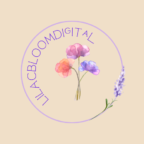Bubbles: More Than Just Fun – A Powerful Tool for Kids’ Emotions and Development
Bubbles! Those iridescent spheres floating through the air bring instant joy and fascination to children of all ages. But did you know that these simple soapy orbs are more than just a source of entertainment? They can be a surprisingly effective tool for teaching kids about emotions, assisting with self-regulation, and even boosting their physical development.
Bubbles and Emotional Literacy
Think about it – what emotions do bubbles often evoke? Excitement, wonder, joy, and sometimes even a little bit of playful frustration when they pop too soon! This makes them a fantastic, non-threatening way to introduce and discuss different feelings with children.
- Identifying Emotions: You can associate different actions with different emotions. “Let’s blow a big bubble for our happy feelings!” or “Oh no, it popped! How does that make you feel?” This helps children connect words with emotional experiences in a light-hearted way.
- Expressing Emotions: For children who struggle to verbalize their feelings, the act of blowing bubbles can be a physical outlet. A forceful blow might represent frustration, while a gentle, steady breath could symbolize calmness.
- Understanding Transience: Just like emotions, bubbles are temporary. They float beautifully and then… pop! This can be a gentle way to introduce the concept that feelings, even big ones, don’t last forever. You can talk about how the feeling came and went, just like the bubble.
Bubbles as a Regulation Tool
The act of blowing bubbles itself can be incredibly regulating for children. It encourages:
- Deep Breathing: To create a good bubble, children need to take a deep breath in and exhale slowly and steadily. This controlled breathing is a fundamental technique for calming the nervous system and managing anxiety or frustration. You can even make it a game: “Let’s see who can make a bubble last the longest with a slow, steady breath!”
- Focus and Attention: Concentrating on blowing a bubble, watching it float, and trying to catch it requires focus and attention. This can be a helpful way to redirect a child’s attention away from overwhelming emotions or situations.
- Mindfulness: The simple act of observing a bubble – its colors, its movement, its delicate form – can be a mindful experience, bringing children into the present moment and helping them to ground themselves.
Boosting Motor Skills with Bubbles
Beyond emotional development, bubbles are also fantastic for honing both fine and gross motor skills:
- Fine Motor Skills: Holding the bubble wand, dipping it into the solution, and carefully blowing requires precise hand-eye coordination and strengthens the small muscles in their hands and fingers.
- Gross Motor Skills: Chasing bubbles, reaching for them, and popping them encourages running, jumping, and large muscle coordination.
Product Recommendations for Bubble Fun and Learning:
Here are a few bubble-related products that can enhance learning and play:
- Large Bubble Wands: Great for demonstrating big breaths and encouraging gross motor movement.
- Bubble Solution Sets with Multiple Wands: Allow for exploring different blowing techniques and sharing with others.
- Character-Themed Bubble Blowers: Can add an element of fun and connect to familiar characters, making the activity more engaging.
- No-Spill Bubble Buckets: Minimize mess and allow for independent play.
By incorporating bubbles into playtime, you’re not just providing entertainment; you’re offering a valuable tool that can help children understand and manage their emotions, practice calming techniques, and develop essential motor skills – all wrapped up in a cloud of soapy fun!
Affiliate Disclaimer:
Please note that this blog post may contain affiliate links. If you make a purchase through these links, I may earn a small commission at no additional cost to you. I only recommend1 products that I believe can be beneficial for children’s development and well-being.







